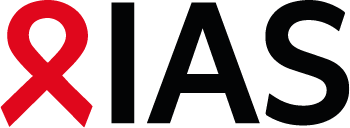Share Abstract
Pubertal development and reproductive health of adolescents born to HIV-infected mothers
Abstract Content:
Background: With the improvement of the prognosis for HIV-infected infants, thanks to the availability of antiretroviral therapies, young adults infected since birth are becoming an emerging group among the HIV-infected population. In the French Perinatal Cohort (ANRS EPF-CO10), most of adolescents were treated by antiretroviral therapy early, at a median age of 9 months and 90% had been prescribed HAART, initiated at a median age of 7.5 years. We aimed to study the further evolution of HIV perinatally infected young adults in terms of pubertal development and reproductive life in HAART era.
Methods: The eligible population consisted of HIV-1-infected children included at birth in the French Perinatal Cohort ANRS EPF-CO10. We restricted analysis to infants with a follow-up after the age of 8 years. The onset of puberty was defined as the entry into Tanner stage ≥2, for pubic hair in boys and girls (P), genital development in boys (G) and breast development in girls (B).
Results: Of the 334 eligible children, 46% were boys and 39% were born to mothers from Sub-Saharan Africa. Median age of boys at the entry into stage G2 was 12.1 years (Interquartile range: 11.4-13.5), and into stage P2 12.1 years (IQR: 11.1-13.6). For girls, median age at the entry into stage B2 was 10.9 years (IQR: 10.3-11.7) and into stage P2 11.6 years (IQR: 10.6-12.2). Menses occurred in median at 12.7 years (IQR : 12.1-13.9).
Among the 201 adolescents, followed-up after 15 years old, more than 66% of adolescents lived with at least one parent and 60% were in general schooling. Among the sexually active young adults (n=28), 20 reported using condom at least once.
Conclusion: Compared with international norms (Marshall and Tanner, 1969; Marshall and Tanner, 1970), these first results on pubertal development seem to show no delay at the onset of puberty in HIV-infected adolescents.
Methods: The eligible population consisted of HIV-1-infected children included at birth in the French Perinatal Cohort ANRS EPF-CO10. We restricted analysis to infants with a follow-up after the age of 8 years. The onset of puberty was defined as the entry into Tanner stage ≥2, for pubic hair in boys and girls (P), genital development in boys (G) and breast development in girls (B).
Results: Of the 334 eligible children, 46% were boys and 39% were born to mothers from Sub-Saharan Africa. Median age of boys at the entry into stage G2 was 12.1 years (Interquartile range: 11.4-13.5), and into stage P2 12.1 years (IQR: 11.1-13.6). For girls, median age at the entry into stage B2 was 10.9 years (IQR: 10.3-11.7) and into stage P2 11.6 years (IQR: 10.6-12.2). Menses occurred in median at 12.7 years (IQR : 12.1-13.9).
Among the 201 adolescents, followed-up after 15 years old, more than 66% of adolescents lived with at least one parent and 60% were in general schooling. Among the sexually active young adults (n=28), 20 reported using condom at least once.
Conclusion: Compared with international norms (Marshall and Tanner, 1969; Marshall and Tanner, 1970), these first results on pubertal development seem to show no delay at the onset of puberty in HIV-infected adolescents.
